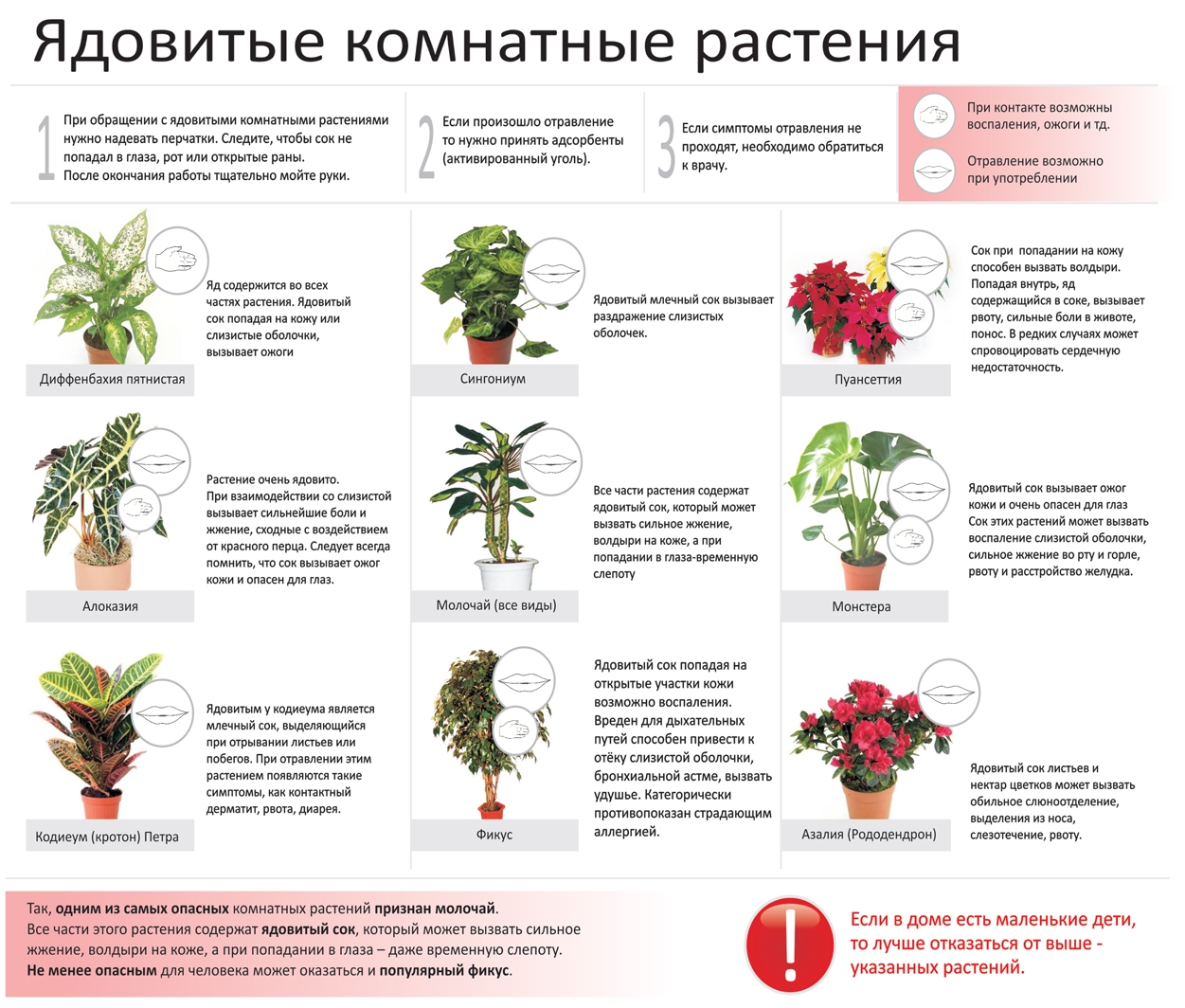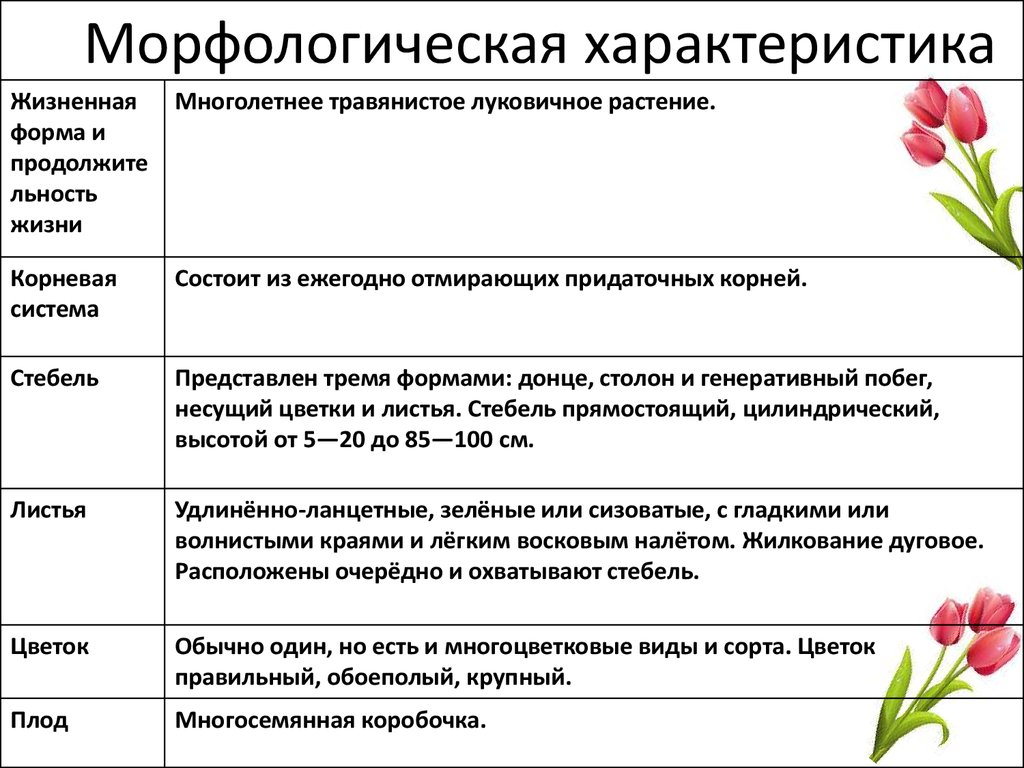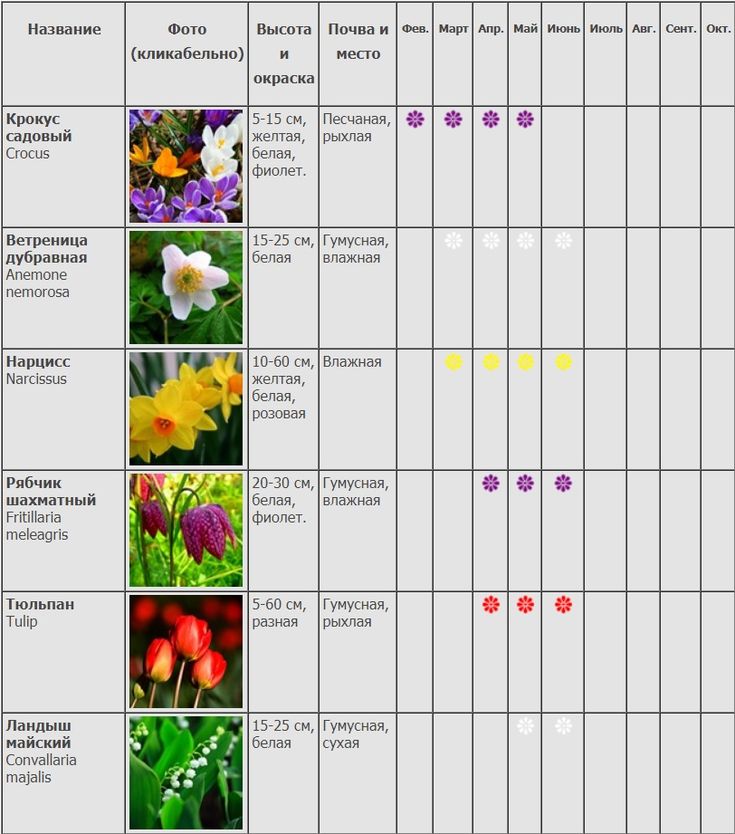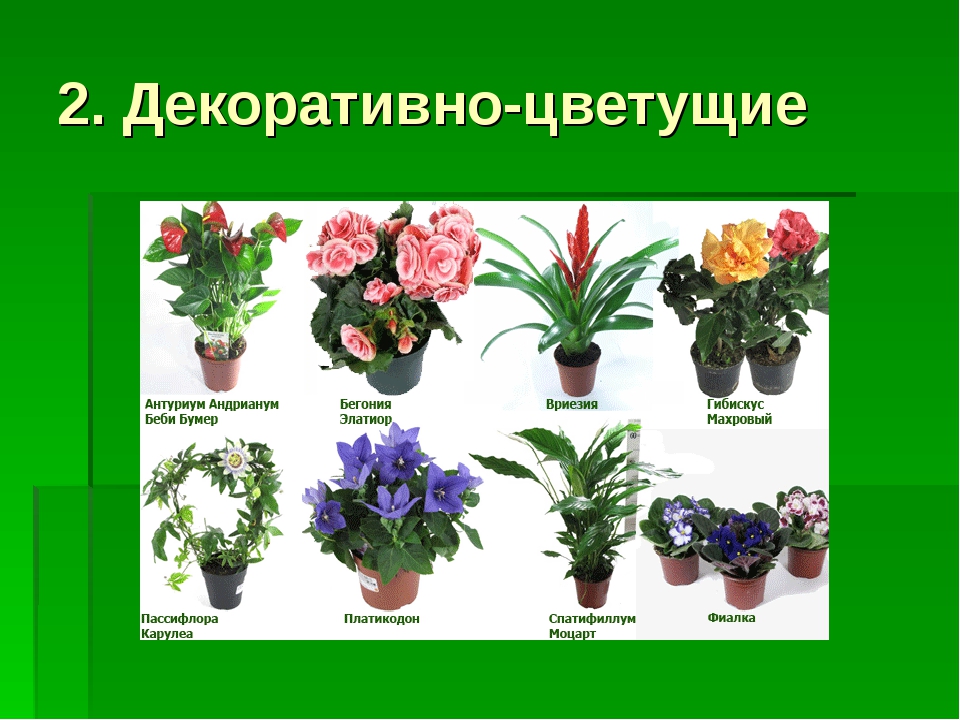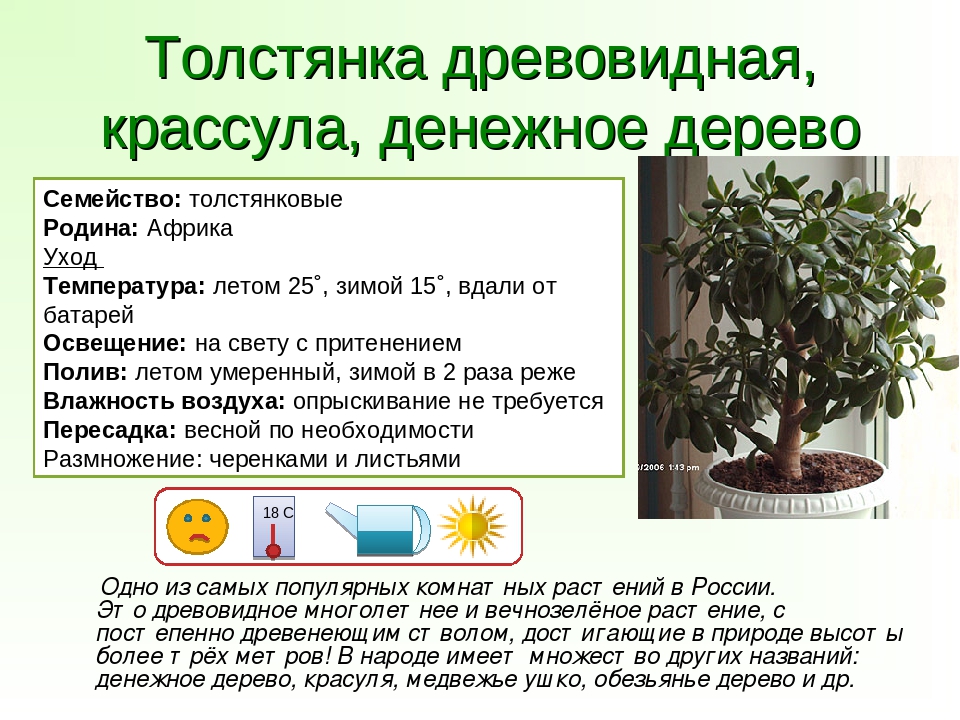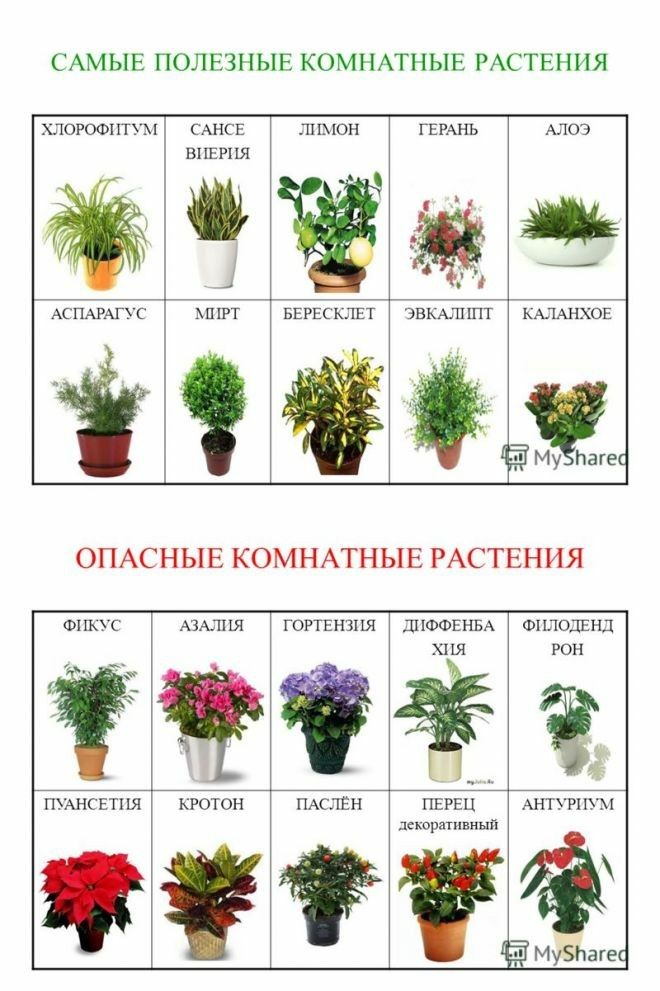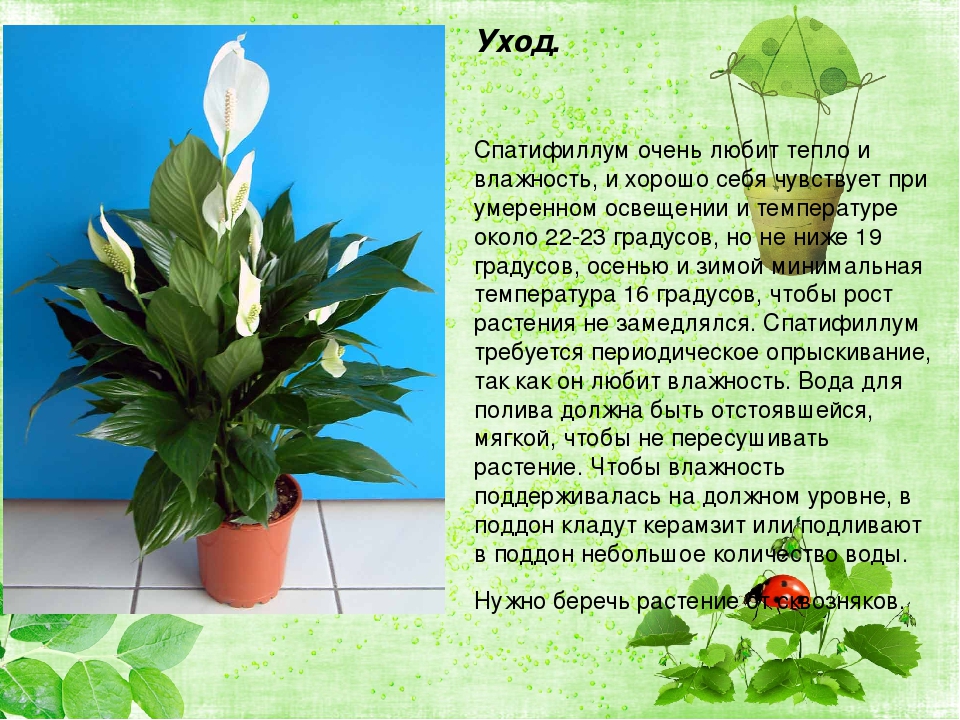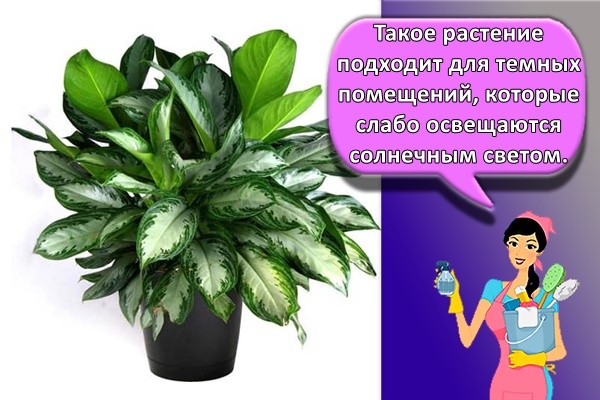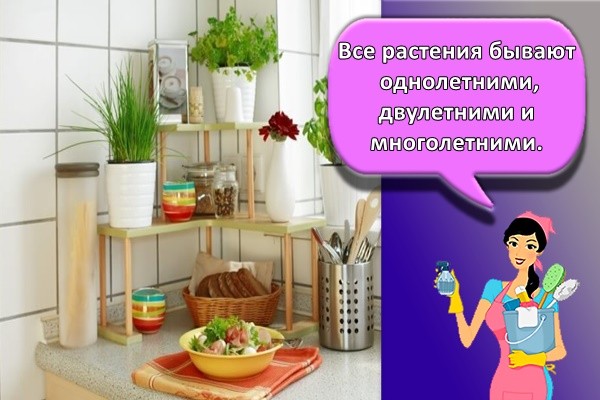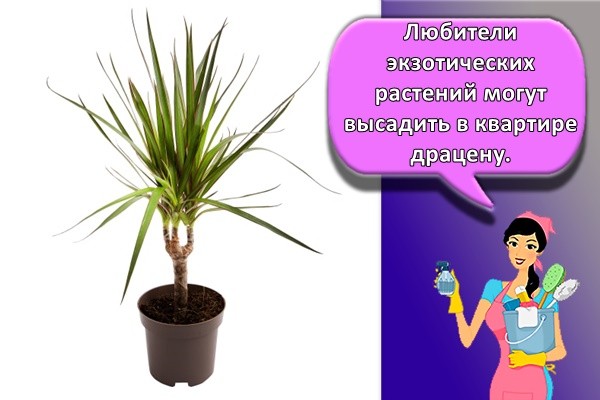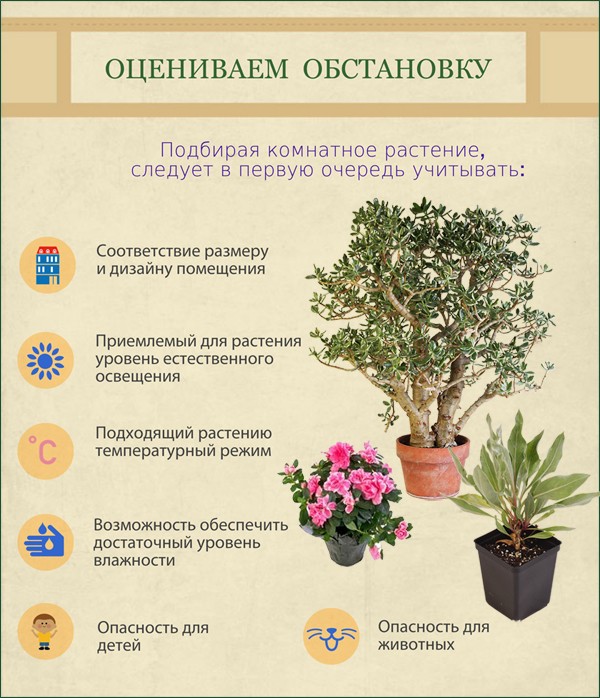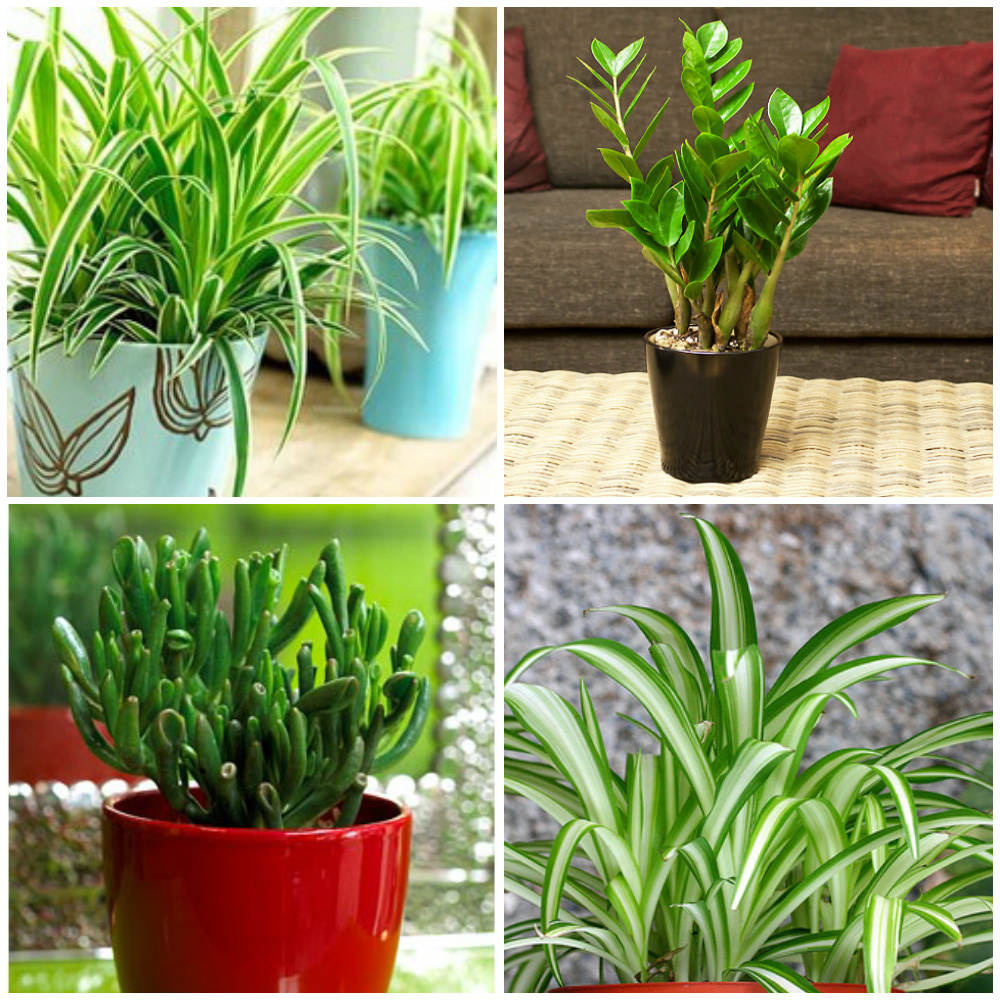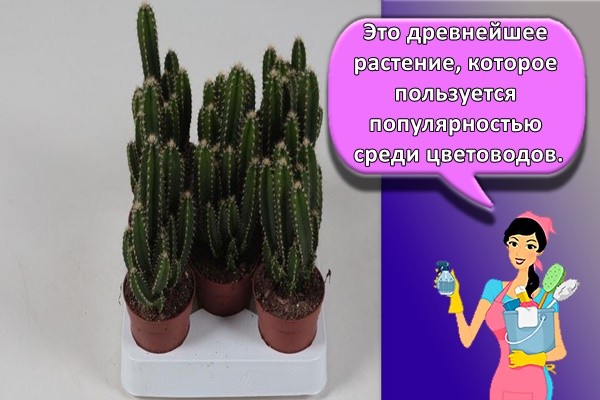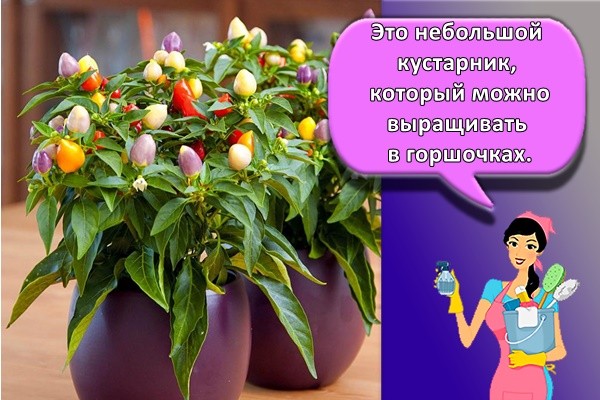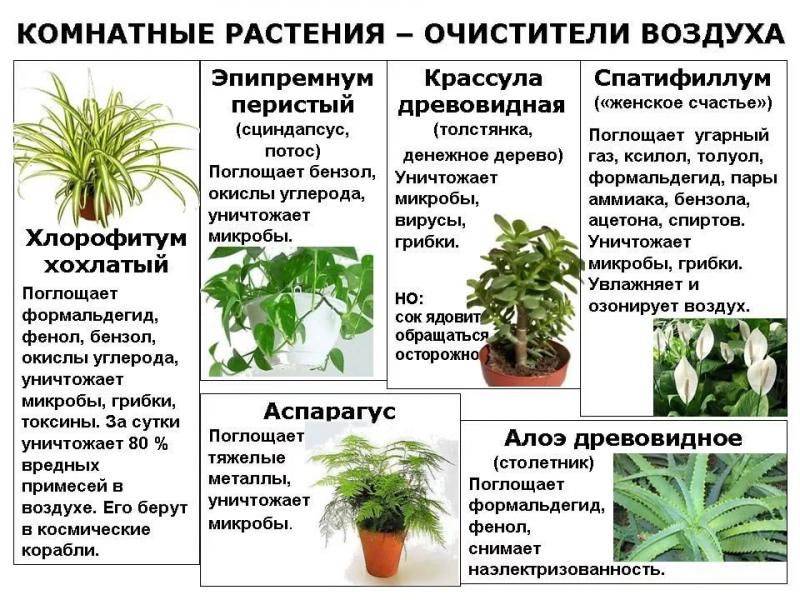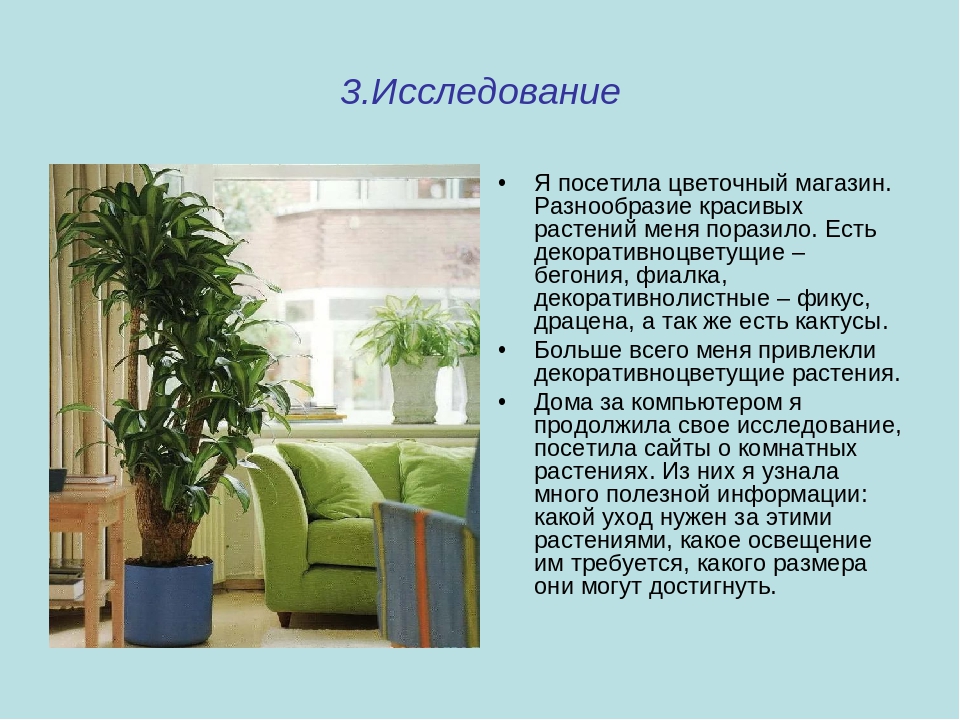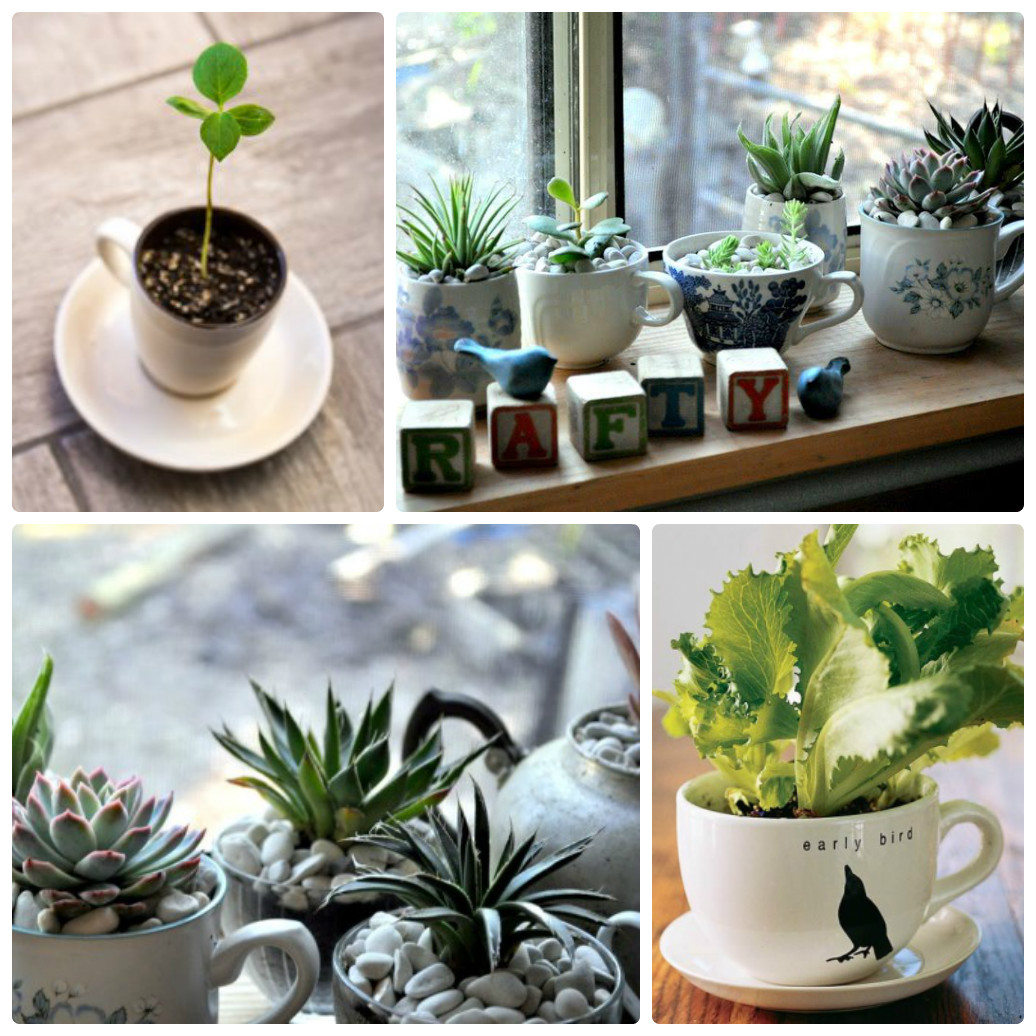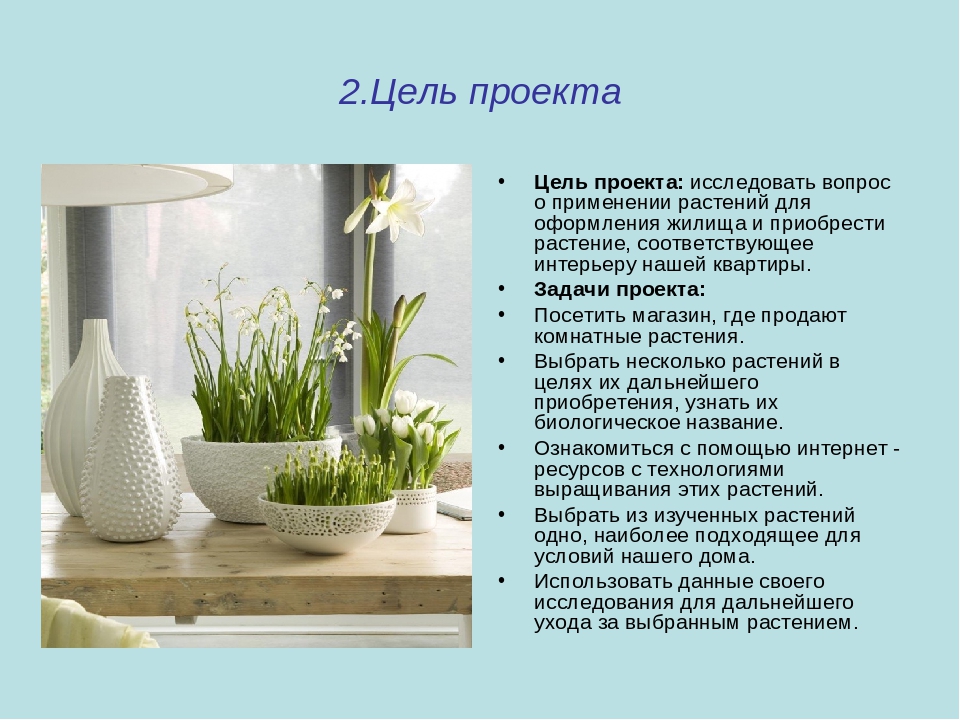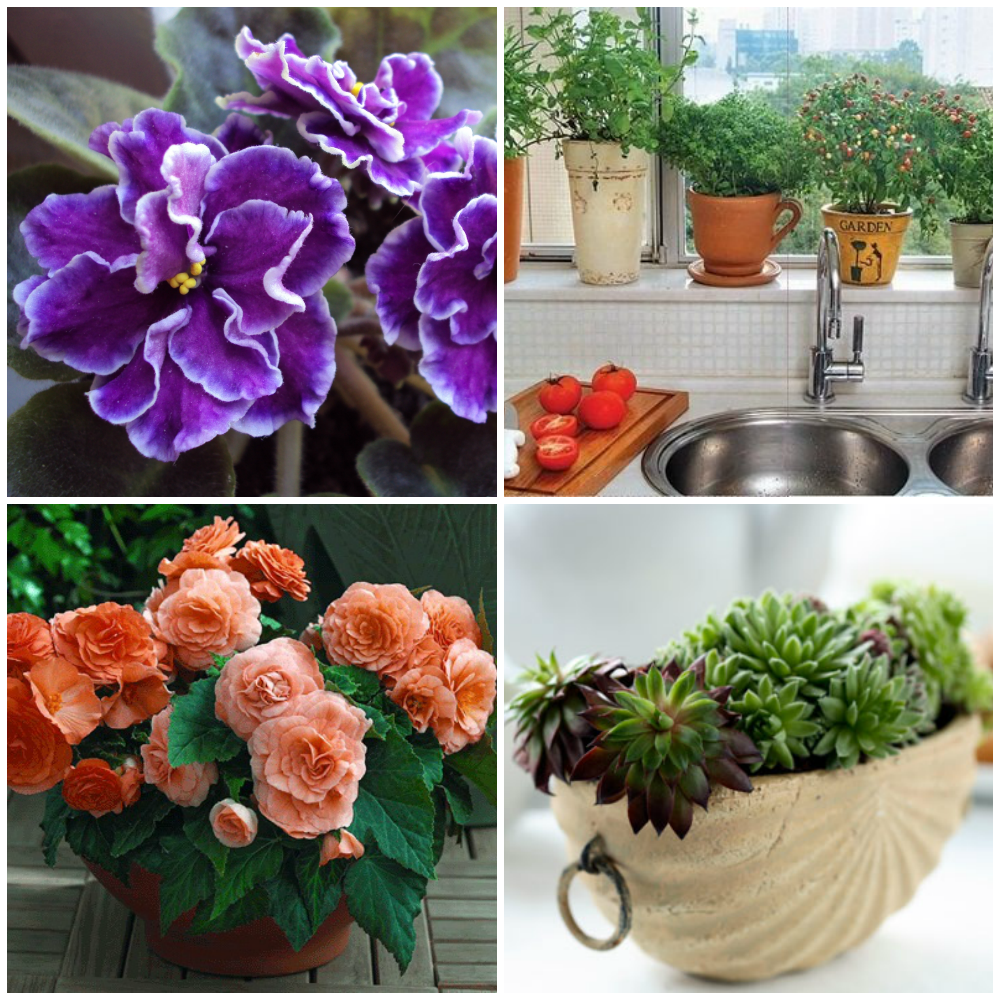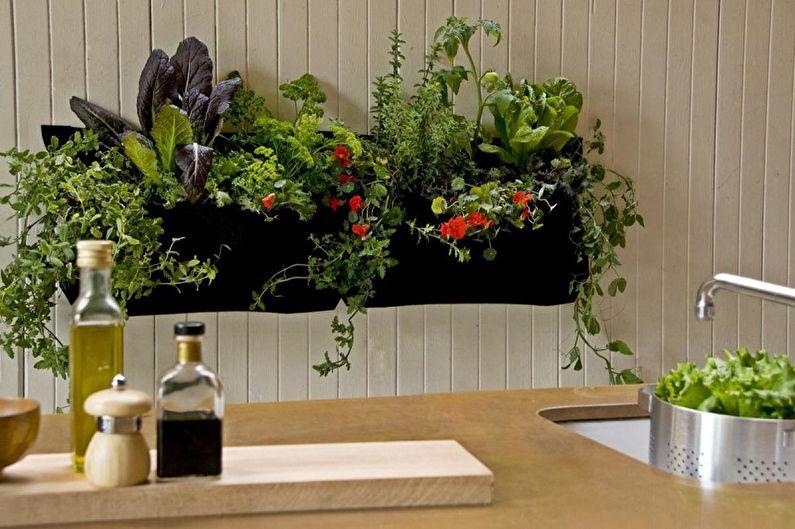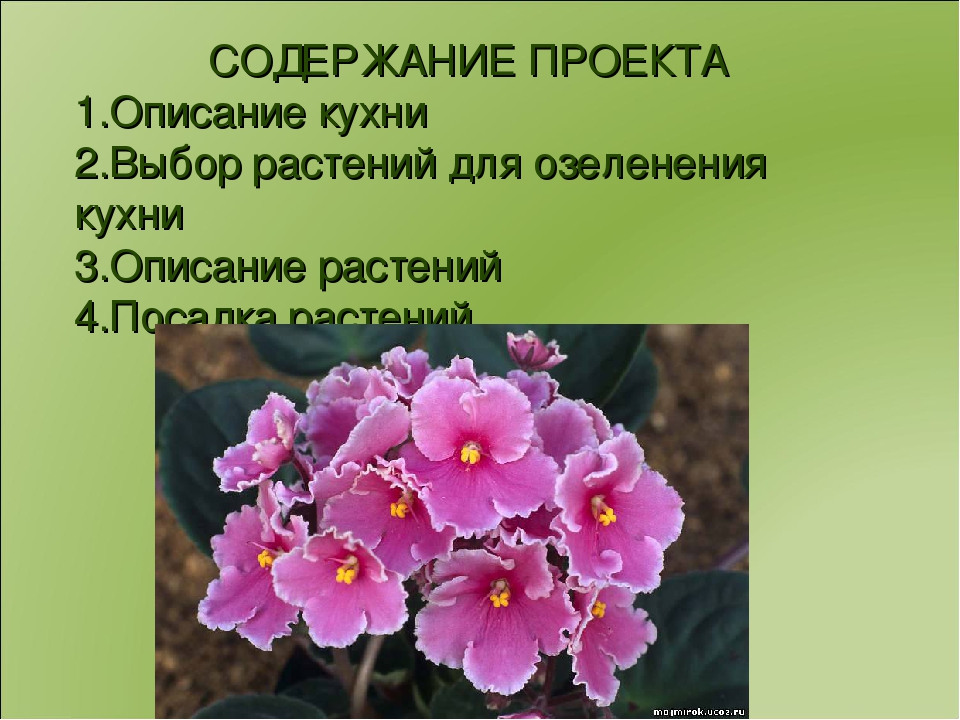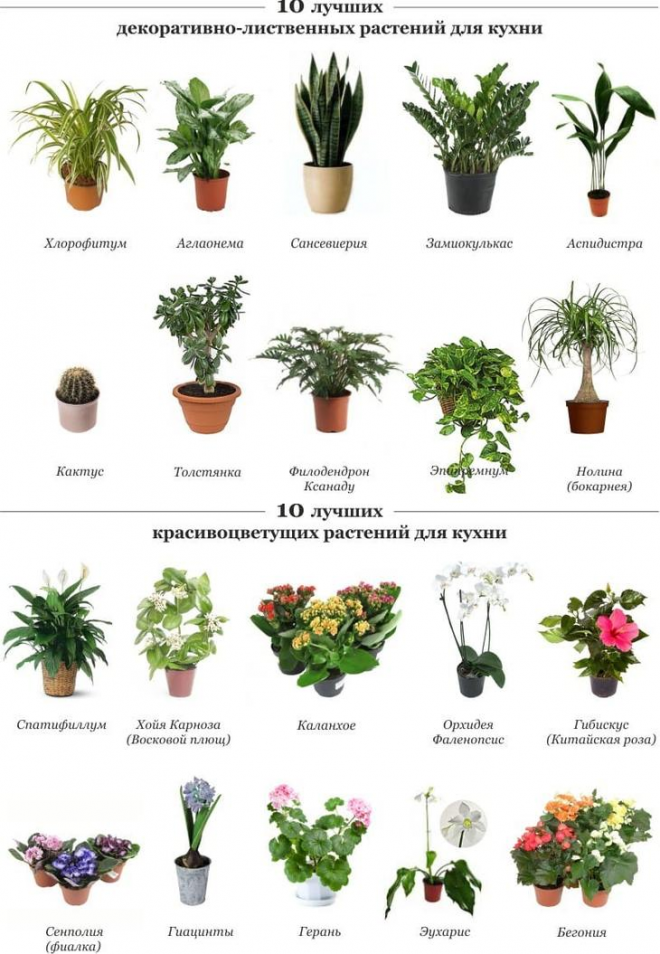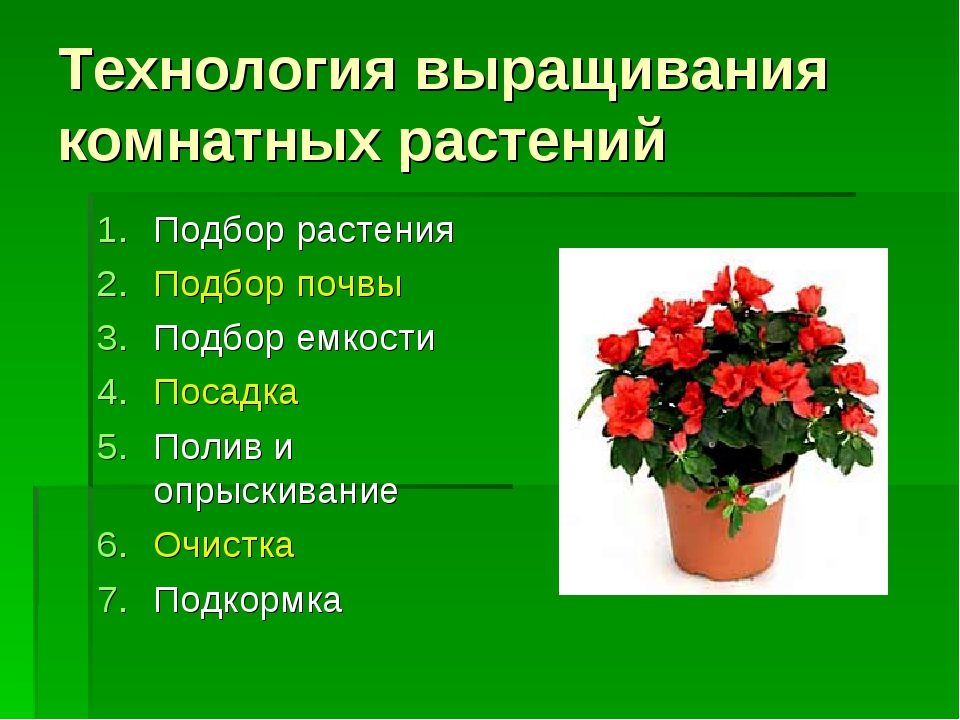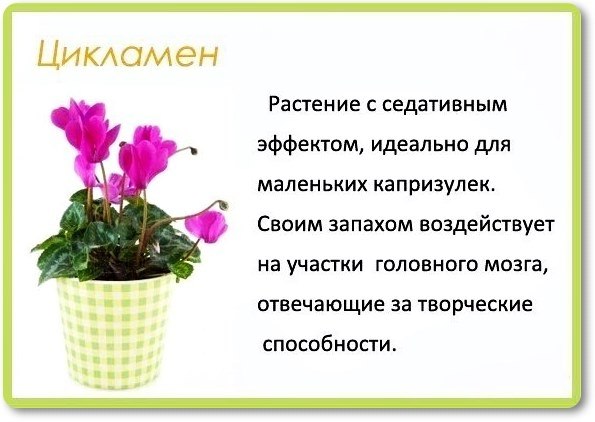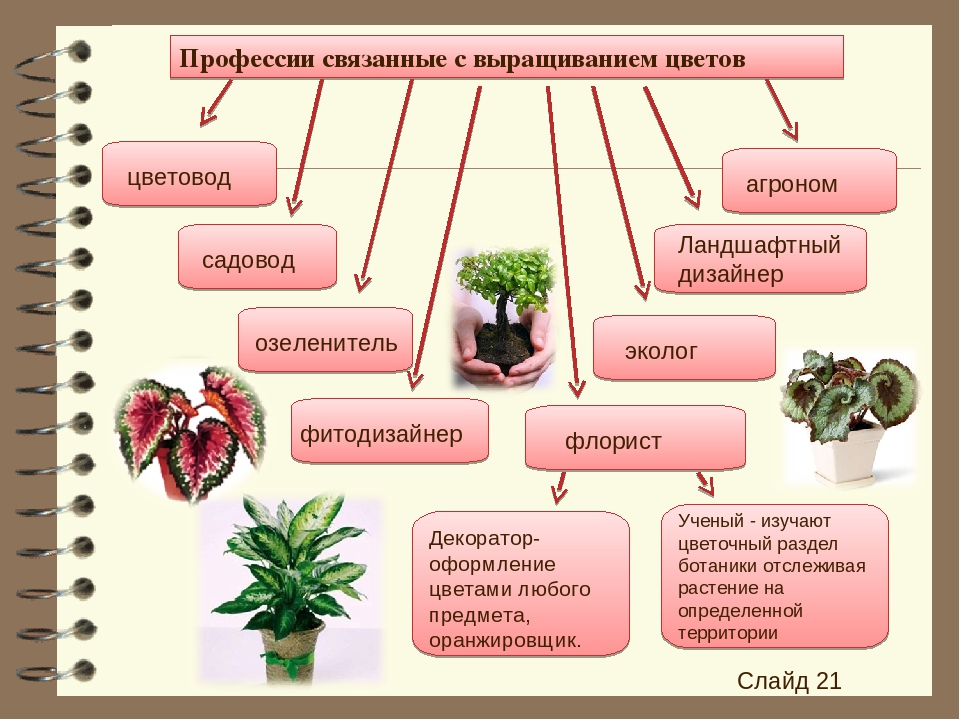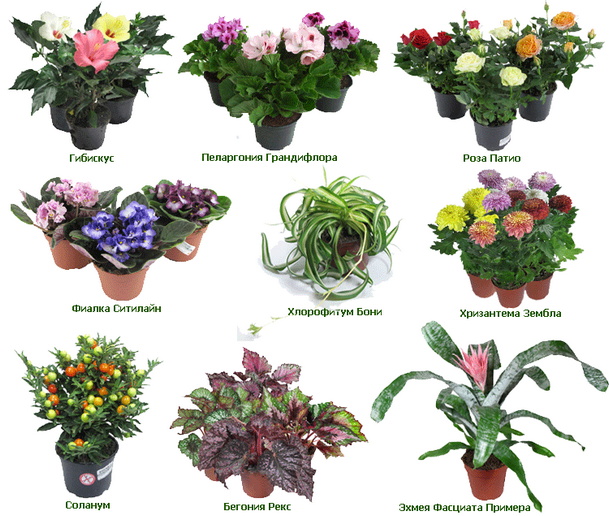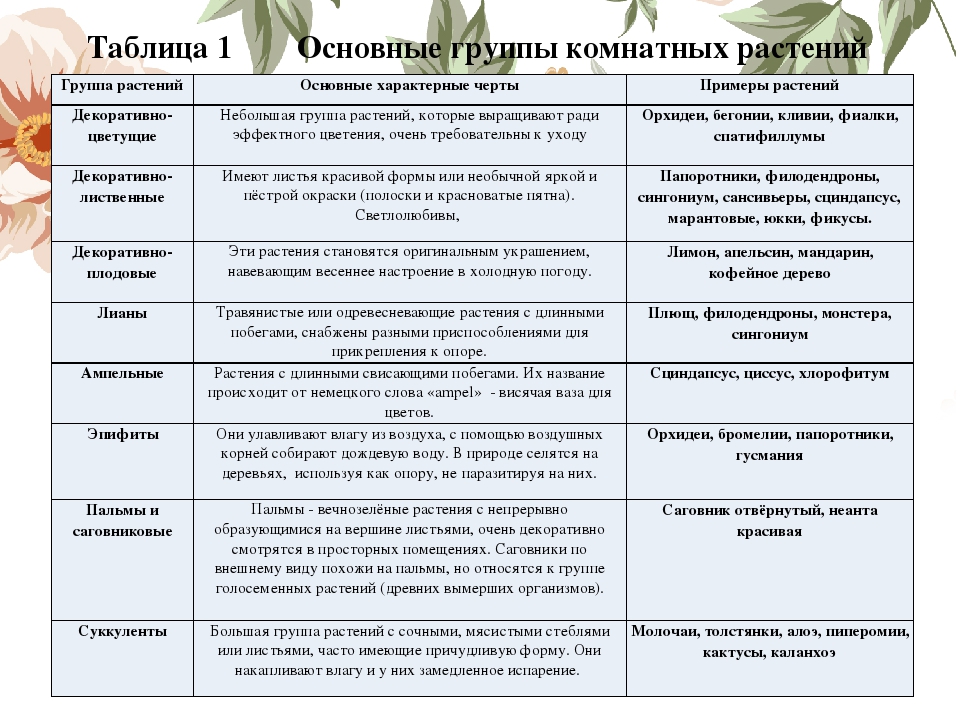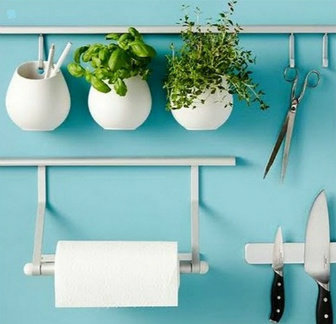What potted flowers are best kept at home: plant selection criteria
When deciding which plant to choose for the house, you need to think about its place in the apartment. In this case, it is necessary to take into account the size of the plants and their growth rate.
There is a golden rule - the larger and brighter the room, the higher the ceilings, the easier the plants will endure all the hardships of closed spaces.
When choosing plants, consider the wintering conditions you can create for them.
In bright, cool rooms, in a slightly heated loggia or in a winter garden, where the temperature does not rise above 10-15 ° C, warm and light-loving evergreens can successfully overwinter. If in the room the windows face north and in winter the temperature on the windowsill does not exceed 10-12 ° C, then shade-loving cold-resistant plants that shed their leaves for the winter are best overwintered here.
A prerequisite for the purchase is the presence of a trade label from the manufacturer with the name of the plant and an indication of the features of caring for it. Therefore, it is recommended to purchase all plants only in specialized stores, as well as in nurseries or farms producing planting material. Here you will be helped to choose a healthy specimen and will be given expert advice on how to grow it, and often a reminder for caring for it.
Considering the criteria for choosing plants, you do not need to buy flowers if:
- roots break through the drainage holes;
- green bloom or mold is visible on the pots;
- the plant is poorly formed, there are few shoots and leaves on it;
- the size of the pots does not match the size of the plants.
In addition, it is not recommended to buy freshly planted specimens (they can be identified by drooping leaves). In this case, special transitional conditions will have to be created so that the plants adapt to the microclimate of the apartment. Try to choose plants for the house as young as possible, as they adapt better and faster to indoor conditions.
Before buying, it is important to carefully examine the plants so that pests and diseases do not get into the apartment. Aphids often settle on the tops of the shoots, and scale insects on the underside of the leaves.
Sometimes it is not the pests themselves that are visible on the plants, but the damage caused by them. Sticky leaves with a blackish bloom are a sign of the presence of shitovka and a sooty fungus; speckled or spotted - viral spotting.
Make sure that subtropical and especially tropical plants purchased during the cold season are carefully packed.
In the apartment, new-settling plants must go through an adaptation period.
At home, gently unfold the plant, water it and put it in a cool place for a few days, protected from bright sunlight and drafts.
When growing indoor plants at home, newly acquired specimens should be kept at a moderate temperature for the first time, do not water abundantly. Only after 2 weeks it will be possible to put the new settler in a permanent place.
Next, you will find out in which pots it is better to plant indoor flowers, and what conditions you need to provide for indoor plants.
Useful properties of plants in the office
Having discussed the most popular types of flowers for the office, let's talk about the benefits of greenery in the workplace.
Let's start with the fact that the main problem of the offices is the large number of employees who are located in a small area.

In such conditions, the amount of oxygen in the air decreases, and it becomes much more difficult to work. Therefore, the first and most obvious function of an office flower is to saturate the air with oxygen and absorb carbon dioxide.
Important! At night, greens begin to work in the opposite direction: they absorb oxygen and release carbon dioxide.
However, if during the next break you look at a green plant, then your eyes will recover faster, and you can continue to work.
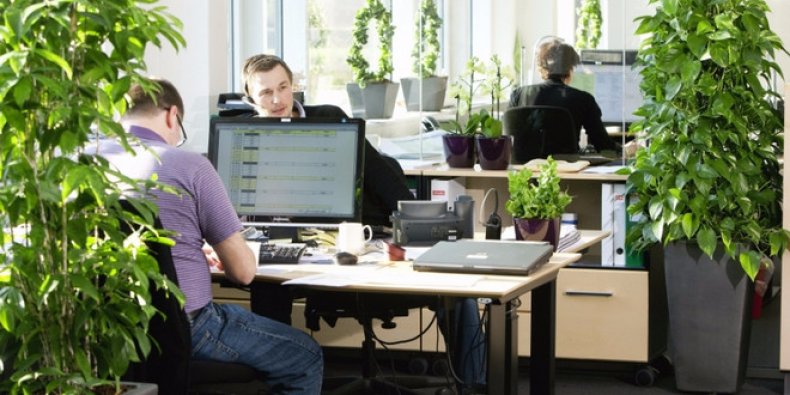
Flowers increase the humidity of the air both during their growth and due to watering. Since air conditioners and heaters dry the air a lot, such a useful “green friends” function helps to maintain optimal humidity.
Many office flowers give off a pleasant scent that reduces stress and gives you the strength to keep going.
Important! Some conifers used in the office decontaminate the air and reduce harmful bacteria.
Health, sleep and houseplants
Floriculture as a hobby at home brings not only aesthetic pleasure, but also the ability to maintain and improve health. For example, cyperus can help regulate the indoor climate when the air becomes dry.
When breeding flowers, you should know that, in addition to pleasing the eyes, this hobby can pose a danger to human health. Flowers with a strong scent can provoke headaches. These are jasmine, lilies of the valley and snowdrops. Some flowers can cause allergies. These include alocasia and ferns. It is worth refraining from cultivating these types of flowers in your apartment.
Plants will contribute to healthy sleep: indoor lemon, rosemary, conifers, geranium, pelargonium, citrus. These plants contain essential oils, qualitatively purify the air, have a good healing effect, give a relaxing and anti-stress effect. Now you know the basic rules for an unusually beautiful hobby at home - floriculture. It remains to choose which of the plants you want to grow.
Flowers for the office: basic requirements
Imagine a “standard” office plant that you see when you visit such structures or, if you work in an office, you see it every day at work. Most likely it will be a cactus.
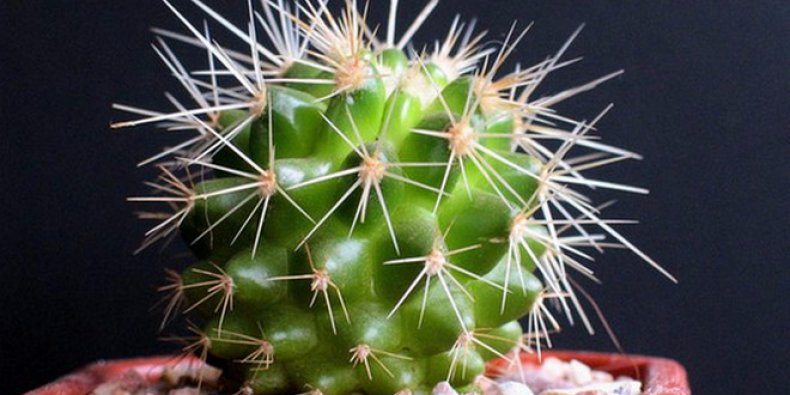
However, why exactly he? The fact is that an office plant, as opposed to a home plant, should be suitable for everyone. That is, if the flower emits any odors, then it can cause allergies among employees or visitors, which will negatively affect work.
Secondly, regardless of the season, the plant should look spectacular, without any dry stems, peduncles or leaves.
Thirdly, an office is not a greenhouse, where all efforts are aimed at caring for flowers, which means that the greenery should be unpretentious so that you do not have to hire extra staff to care for it, or change all the dried vegetation in the office every year.
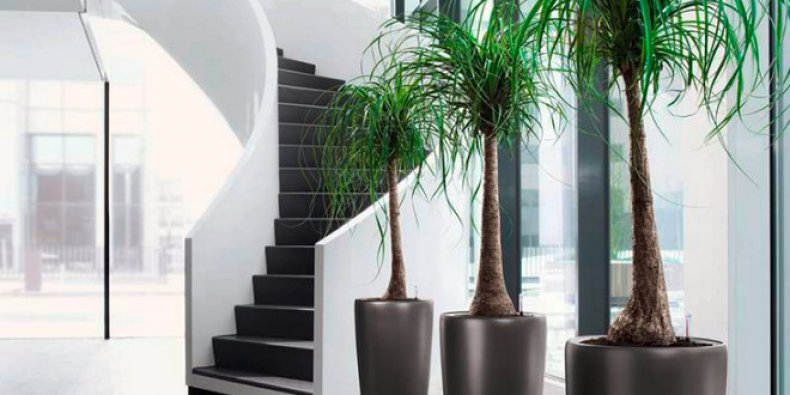
Also, any office flower should be safe. There are a huge number of indoor plants that secrete poisonous sap, or their entire aerial part is somehow poisonous.
In no case should such plants be in the office, as one careless movement, and an employee or visitor will go to the hospital
The shape of the leaves and features of their structure
Fantastically beautiful combinations can be built on whether the plant is perceived as openwork or curly, austere or ornamental. The variety of forms of leaves in plants is great. The play on the contrasts of elongated lanceolate and rounded-reniform, cordate, xiphoid and pinnately dissected leaves creates the basis for a beautiful interaction.
The leaves of neighboring plants should always differ in shape. But besides this, it is worth considering both the texture and texture - the quality and characteristics of the leaf surface, its perception, effect, the impression of the mass of the leaves.
The texture is created by pubescent or glossy, rough, smooth, dissected, ruffled or wrinkled surfaces, but the nature of the attachment, the density of the arrangement and growth of leaves is the texture. The texture of the leaves creates the effect of living metal, velvet, fabric, makes the plant "shiny" or background, more or less catchy.
The texture determines the perception of the plant and is actually a pattern of chiaroscuro or spots that foliage creates in its mass. Elements of different textures and textures are the basis on which any expressive composition is built. And the main tool for creating amazingly beautiful and unique ensembles.
Contrast texture of leaves of various ornamental plants in a flower garden. Stephanie rose
The main rules of a blooming hobby

Before you breed any houseplants, you should be aware that not all of them are suitable for living near children, pets or people prone to allergies. Therefore, giving preference to a particular plant, study all the material that relates to it. An alternative to the literature on flower species is to consult with a professional grower - armed with the right information, you will make the first and best contribution to this wonderful hobby.
When choosing flowers for an apartment, it is better to choose those that will delight you with their flowering all year round. As for the rules for placing flowers in a room, the main thing is not their quantity, but a reasonable arrangement. Flowers, like people, love and appreciate a gentle and caring attitude towards themselves. Avid florists always speak affectionately with their living favorites. Undoubtedly, this attitude, combined with the obligatory care, will bear fruit in the absence of plant diseases, colorful flowering and fast, healthy growth.
It is believed that flowers do not like harsh and loud sounds - especially heavy music. Classic, gentle melodies, on the other hand, contribute to their growth and development. Floriculture as a hobby for women reveals the secrets that reveal many interesting things about indoor plants. For example, flowers are able to become attached to their mistress and react emotionally to her mood - the flower withers and gets sick when she is under stress. Conversely, flowers respond positively to a good atmosphere around them. A hobby at home is a little waste of time, but this probably does not apply to flower cultivation. Flowers require constant self-care, special processing and careful emotional attitude.
Types of landscaping
First of all, you need to understand what types of landscaping can be created in an apartment or house. In general, there are only two of them:
- horizontal
- vertical
Horizontal gardening in the interior is the usual placement of plants on horizontal surfaces: window sills, shelves, tables.
This is the traditional way of arranging colors that everyone is familiar with. The undoubted advantage of this method of placing plants in the interior is its simplicity: no special devices are needed, you can use the furniture and decor elements that are already in the apartment.
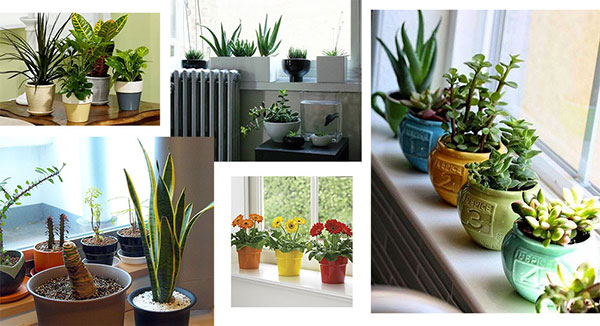 Traditional way of arranging plants
Traditional way of arranging plants
At the moment, in addition to traditional options for arranging flowers, designers also offer unusual ways of landscaping, for example, furniture with built-in pots. This arrangement of greenery in the house looks original and can bring a fresh stream to any interior.
 Furniture decorated with plants
Furniture decorated with plants
Of course, there are also disadvantages. So, for example, when placing plants on horizontal furniture surfaces, too much usable area is used, which can be used for other purposes. In addition, the accumulation of bowls with flowers on tables and window sills clutters up the room and deprives it of visual cleanliness.
In order not to litter horizontal surfaces and visually clear the space, you can use the following method of arranging plants.
Vertical gardening in the interior is the placement of houseplants on special vertical devices (hanging pots, stands and supports for flowers) and vertical structures of the house (walls).
Vertical gardening allows you to completely unload horizontal surfaces, and structures for vertical placement of plants are often a decoration and highlight of the interior in themselves. There are many options for free-standing planters that can organically fit into almost any interior. Wooden, metal (forged) pots, pots, wicker pots are very popular. There are options for both one plant and a whole group, which is very convenient if the size of the room is not large.
 Examples of vertical gardening
Examples of vertical gardening
One of the modern trends in interior gardening is the placement of plants on the walls of the room, the so-called phytowall or green wall. The phytowall construction is a wire frame filled with a substrate. The frame is attached directly to the wall, after which plants are planted on its entire surface. Watering of the planted plants is carried out automatically using drip irrigation. Fitowall is a rather complex structure that requires both careful design and reliable technical solutions and is inapplicable in the conditions of small-sized apartments, but perfectly suitable as an option for landscaping for offices, public spaces, and large mansions.
 Vertical gardening in public areas
Vertical gardening in public areas
In more cramped conditions, phyto-painting will help to decorate the interior - a reduced version of a phyto-wall, applicable in almost any room.
 Vertical gardening in residential premises
Vertical gardening in residential premises
The disadvantages of vertical gardening can be called a rather complex installation of structures (phytowalls, phyto paintings) and additional cash costs.
A little feng shui
Many of us prefer to build furniture, flowers, and indeed the floor of life according to the ancient philosophy of Feng Shui. And if you are one of them, then the following information is for you.
North side
If the kitchen is located on the north side, then we select plants with orange or red flowering. Bright flowers, for example - rhododendron, "dilute" the northern cold of life. To protect the house from the "cold" we also place here pointed flowers like dracaena.
East side
If the kitchen is on the east side, then it is impossible to place holly flowers on it. To increase well-being in the house, we will put a money tree here, here it belongs. The rounded, strong leaves of this plant are easy to clean, and the flower itself is hardy enough for the kitchen.
Indoor flowers ennoble even the most trivial interior. A green corner in the kitchen will not only make it more comfortable and lively, but will add oxygen and health to you. Some types of houseplants, such as geraniums, even kill a variety of bacteria. Be sure to get flowers for the forge and do not be confused by the heat, fumes and steam, choose the right plants, take care of them on time, and then they will delight your eye every day.
Where to place
It is important not to overdo it with the colors in the room. If the kitchen is small, then let the flowers be small, and there should not be too many of them.
It is impossible to place a plant next to a sink, since even the most unpretentious, with constant moisture and the ingress of soapy splashes, can die or get sick. The same goes for the arrangement of flowers next to the slab. Grease splashes, high temperatures - all these can ruin your plant.
Flowers that are on the top shelf or refrigerator will require frequent spraying and watering as dry air will rise.
If you choose between flowering and ornamental-deciduous plants, then it should be noted that the former will require more careful care, for example, in the part of the world. Deciduous ones are perfect for not very bright rooms.
A window sill will always be an excellent place for flowers in the kitchen, no matter how corny it is.Nevertheless, if the plant does not tolerate drafts well, then you can come up with a special pots or shelf for it - here the air temperature and humidity will be more optimal. Of course, if the kitchen is large or combined with a dining room or living room, then you can use a couple of floor plants. Putting a small flower in an original planter on the dining table, you can add coziness and harmony, and it looks beautiful.
English ivy
Your kitchen will be more beautiful if you hang this plant above the sink or by the window. English ivy is easy to grow indoors if it gets direct sunlight. In addition, the plant will be an excellent accent color. Its sharp leaves come in a variety of green tones with yellow, white, or black spots, so you'll be sure to find the color that works for you.
Broken nail doesn't matter: tips on how to handle your nails at home
"Olga" from the series of the same name: the tragic fate of the actress Yana Troyanova
Only on the soft spot: Russian Domostroy forbade children to be punished otherwise
10 ideal indoor plants for the kitchen (decorative leafy)
So, only drought-resistant ones that can withstand temperature extremes, do not require abundant spraying, greenhouse conditions and complex plant care are suitable for gardening a kitchen.
Here is a list of indoor plants that are great for keeping in the kitchen:
- Chlorophytums;
- Aglaonema;
- Epipremnums (Scindapsus golden);
- Sansevieria;
- Zamioculcas;
- Aspedistra;
- Cacti;
- Fat women (crassula);
- Philodendrons;
- Nolina (bokarnea).
Chlorophytum in this list is in the first place not only because of its unpretentiousness, but also its ability to cleanse and humidify the air well. So good that he is called an air orderly and is kept even in spaceships where it is impossible to ventilate the space. Therefore, in the presence of plastic kitchen furniture, for example, made of chipboard, and a gas stove, it is recommended to acquire them, and one flower for the kitchen will be enough. In addition, small and delicate white flowers grow in chlorophytum during the flowering period.
All indoor plants in the interior of the kitchen look harmonious and immediately make it more comfortable. Chlorophytum is no exception.
Place it on top of a headset, high on a shelf, or place it in a hanging planter anywhere but in the shade. Partial shade is acceptable, but remember that the closer to the light it grows, the brighter its leaves will be.
The next favorite for the kitchen is Aglaonema, once famous for her "role" as a friend of the protagonist of the movie "Leon". This evergreen herb, like chlorophytum, perfectly cleans the air, but it tolerates temperature changes worse and needs more air humidity.
Aglaonema with green leaves can be placed in the back of the kitchen, while plants with variegated leaves are best kept close to the window, but not in direct sunlight. The leaves need to be regularly wiped off dust, which is not so difficult, since they are relatively wide.
This is how this houseplant looks in a kitchen interior.
The next popular species is epipremnum (golden scindapsus). It is also classified as an air-purifying and unpretentious plant, which means it is suitable for the kitchen. Unlike the first two kitchen houseplants, the scindapsus is an evergreen tropical liana that grows up to 1.5 m in length.
It can be grown almost anywhere, as it is tolerant of temperature extremes and even artificial lighting, which, however, turns completely green. Where to put it? The best place is at the top of a kitchen unit, on a sideboard shelf, in a hanging planter, etc. Of course, long indoor plants in a Provence style kitchen interior look the most organic.
But in any other style, from classics to Scandinavian minimalism, epipremnum will be appropriate.
Now let's talk about the 4th participant in the list of the best plants for the kitchen - sansevieria, which is also known as "mother-in-law's tongue" or "pike tail".
Due to its bright color and the shape of the leaves, reminiscent of kelp or a flame of fire, the “pike tail” looks very impressive in the interior of a kitchen of any style, and with a large growth it can play the role of an accent. In all modern styles - Scandinavian, in minimalism, high-tech, modern and loft, sansevieria maintains restraint of lines and shapes, as can be seen in the photo below.
We have considered only the most popular plants, because it is impossible to tell about all 10 species from our list in one article. But zamioculcas, cacti, philodendrons and other specimens are no less interesting. Therefore, we recommend that you study the topic of "kitchen botany" in more detail in special books and video tutorials. In the meantime, we look at the plants and flowers in the interior of the kitchen in these photos (scroll to the right).
The first step is to separate soloists and partners
All plants in any decorative composition, both in flower beds and in groups of trees and bushes, can be divided into three types.
Soloists or accents
They can be safely called visual "beacons", the main eye-catching and mood-setting cultures. Accents, soloists, focal points, beacons - you can't name such plants, their role will still remain defining and dominant.
Usually, soloists mean large plants, but the main thing is not size, but expressiveness. Soloists are plants with an unusually spectacular shape, catchy foliage or especially luxurious flowering, interesting in lines, graphics or texture, with clear or extravagant shapes that immediately, at first glance, evoke emotions and associations.
Soloists are always the first to stand out in any company, differ sharply from the environment, set the mood for any decorative ensemble, unite the group into a single whole, determine the style, theme or design idea, seasonality and color palette.
Flowering shrubs, the most spectacular perennials, recognizable at first glance, standard and trimmed plants are used as soloists. The number of soloists is not limited to one plant; in the composition, you can create several focal points of attraction of the eye, set rhythm and dynamics with the help of accents. Roses, hydrangeas, peonies, rogers, dicentra, miscanthus, sheared boxwoods are examples of typical soloists.
Partners
These are cultures that are selected for a specific soloist or accent. The main task of partner plants is to shade and emphasize the soloist, to maximize the effective disclosure of his merits. It is the partners who give the compositions mass and volume, fill it with colorful flowering, meaning and character, guarantee that the composition will be attractive throughout the whole year or at least the entire garden season.
Lush plants are usually considered as partner crops, capable of creating large interesting spots, consistently decorative, with interesting flowering. Their main characteristics are dense foliage and expressive beauty, volume. Partners are often lavender, knotweed, mint, monarda, astilbe, rudbeckia, erythematosus, ferns, phlox, geraniums (although geraniums can also play the role of a filler).
Placeholders
These are plants that create a background - they "close" plantings where necessary, introduce transitions and harmonize perception, mask gaps and voids, compensate or hide the shortcomings of partners and soloists. Fill plants create the brightest color and seasonal spots and textured backgrounds.
The selection of plants begins precisely with the main, dominant crops, for which the partner plants are then selected, and the ensemble ends with fillers, or background.
A flower garden with an emphasis on sage. 3seasons
Model selection criteria
After choosing a layout, it is determined which kitchen model is suitable for the room:
- her physical size;
- design;
- style.
In this case, the cost of furniture and the manufacturer are taken into account, as a guarantee of quality and reliability.
Room dimensions
Kitchens with an area of 12 meters or more can accommodate a set of any configuration. The exception is elongated rectangular rooms, where it is impossible to put a U-shaped and two-row module. For kitchens from 8 to 12 square meters, linear, L-shaped, peninsular options are possible. In kitchens up to 8 square meters, linear and L-shaped layouts are used.
Style and interior design
The interior of the kitchen should be in harmony with other rooms in the apartment according to the colors of the walls, ceiling, and the appearance of the furniture. The age and architecture of the building influences the choice of kitchen style. For example, the presence of stucco molding on a high ceiling in the kitchen will not be combined with the design in the form of techno, hi-tech.
Budget
The cost of furniture depends on the number of running meters, the materials used and the brand. A standard kitchen module will be 15-20% cheaper than a custom-made one. When calculating financial possibilities, you need to know what you can save on when buying.
A headset with:
- strict geometric design;
- one cabinet equal in length to two;
- standard cabinet height;
- replacement of wall cabinets with shelves;
- furniture made of artificial materials.
Manufacturer
The headset purchased from Russian companies is not inferior in quality and price to foreign counterparts. The choice of kitchen should be made according to customer reviews and information about the manufacturer on the Internet.
The best flowering ornamental plants
Correctly selected flowering indoor plants are able to create a favorable microclimate, absorb carbon dioxide emitted by kitchen appliances quite actively and effectively saturate the air in the room with oxygen. Of course, flowering indoor crops need more careful and attentive care than decorative deciduous plants.
| Plant name | Latin name | Features and characteristics |
| Balsam | Impatiens | Unpretentious indoor culture, which is willingly grown by novice amateur flower growers |
| Pelargonium | Pelargonium | A fairly thermophilic plant with beautiful leaves and flowers |
| Kalanchoe Blossfeld | Kalanchoe blossfeldiana | A plant from the Tolstyanka family with weakly branched stems and bright flowers, collected in umbrella-shaped inflorescences |
| Saintpaulia | Saintpaulia | One of the most common houseplants known in floriculture as the Usambara violet. |
| Cyclamen | Cyclamen | A beautifully flowering culture belonging to the category of tuberous plants |
| Fuchsia | Fuchsia | Has a lot of hybrid forms with double and large flowers |
| Anthurium | Anthurium | Prized for its extraordinary waxy flowers |
| Hibiscus | Hibiscus | An unpretentious houseplant that blooms beautifully almost all year round |
| Begonia | Begonia | Blood-red begonia is best suited for cultivation in the kitchen. |
| Kaleria | Kohleria | "Colombian Beauty" blooms quite abundantly until winter |
Interesting ideas
Nowadays, more and more often, various indoor plants are used in order to emphasize the design style of the kitchen. Some have even become an integral part of a particular style or idea.
1. For modern design solutions, including the presence of straightness, it is worth choosing the appropriate plants. In this case, there are uses such as bamboo, dracaena, and especially sansevieria.
2. If it is a French style, a whole range of various plants will add romance to the interior. Not necessarily exotic, quite familiar, but combined according to the principle - if there is a fern, there must be ivy.
This mini-garden will decorate your kitchen.
Additional Information. Lithops belong to succulents, their appearance is such that they are otherwise called "living stone".
Lithops belong to succulents, their appearance is such that they are otherwise called "living stone".
The kitchen is perhaps the only room in the house where the whole family gathers in full force, including friends and close acquaintances.
And this means that special attention should be paid to decorating it, but for this there has not been, and will not be, a better solution than the use of plants suitable for such purposes. Such a choice is easy to explain, they add harmony, aesthetics, and most importantly, create a unique home comfort
Conditions of detention
Regardless of whether it is a sun-loving plant, or it prefers shaded places, they all need a source of light, that is, a window
Vases with flowers are most often placed on kitchen windowsills, so it is important to take into account the side the windows face, the lighting depends on this. But flowers need not only light, but also fresh air, which makes the window sill an ideal place for indoor plants.
This is true, but some nuances should be taken into account.
Vases with flowers are most often placed on kitchen windowsills, so it is important to take into account the side the windows face, the lighting depends on this. 1
The windows facing south and southeast give too much sunlight and warmth in summer. In such conditions, even sun-loving flowers often perish; they are too hot on such windows. But on them, any types of indoor plants feel comfortable in the winter.
1. Windows facing south and southeast give too much sunshine and heat in summer. In such conditions, even sun-loving flowers often perish; they are too hot on such windows. But on them, any types of indoor plants feel comfortable in the winter.
On windows that face south, it is better to have unpretentious plants
2. If the window frames are wooden, in winter the flowers are cold on the contrary, in this situation especially heat-loving ones can die from the cold. In order to prevent such a development of events, the windows must be insulated using proven methods, using cotton wool and adhesive tape, not forgetting about the warming of flowerpots.
If the window frames are wooden, in winter the flowers, on the contrary, are cold, in this situation, especially heat-loving ones can die from the cold. Therefore, the windows must be insulated.
3. As you know, windows are also a source of fresh air, which is necessary for all indoor plants. But few people know that they cannot be kept near the open window, simply by opening it for ventilation. At this point, the flowers must be removed far away in order to save them from direct contact with the environment.
Be careful when airing the room. Flowers do not like drafts
The conditions of detention mean, in addition to creating a temperature regime, also maintaining the necessary humidity. This is especially true for plants in the kitchen, in view of the warm and dry air, they need to be watered more often than those located in other rooms. Moreover, direct watering at the root should be avoided; they should be sprayed, saturating not only the stem, but also the leaves with moisture.
When watering, direct watering at the root should be avoided; they should be sprayed, saturating not only the stem with moisture, but also the leaves.
Important! Without exception, all indoor plants are afraid of drafts, which housewives often forget, opening the vents even in winter in a smoky room, leaving pots on the windowsill. Before that, you need to take them out of the neighboring rooms, even if the kitchen is ventilated in the summer.
Criterias of choice
Flowers for the kitchen must be chosen correctly. Any indoor plants have certain requirements for parameters such as illumination, temperature and humidity levels in the room.
To know which ornamental plants are suitable for placement in the kitchen, you need to consider the basic factors required to grow them.
| Initial parameters | Location features | Most suitable plants |
| Illumination | Southwest, east and west facing windows | Phalaenopsis, miltonia, encyclia, chlorophytum, any succulents and cacti, euphorbia, aloe, cyclamens, passionflower, azaleas, agave, fat women and calceolaria |
| North and north-east direction windows | Dracaena, aspidistra, aglaonema, dieffenbachia, monstera, ivy, pteris, rubbery ficus, shefflera, bamboo, zamioculcas, pilea and sansevieria | |
| Temperature regime | Heat-loving plants requiring air temperatures in the range of 20-25 ° С in summer and about 14-18 ° С in winter | Maidenhair, alocasia, afelandra, royal begonia, indoor coffee tree, any coleus and saintpaulias, silvery peperomia, scindapsus, sanchezia and tunbergia |
| Cold-resistant plants requiring an air temperature of 12-15 ° C in summer and about 8-12 ° C in winter | Euonymus, indoor pomegranate, camellia, unpretentious laurel and myrtle, oleander, pelargonium and primroses, fuchsia, as well as some types of cactus | |
| Air humidity | Prefer high humidity | Saintpaulias or uzambara violets, dracaena sandera or indoor bamboo, camellia, nephrolepis, dieffenbachia, sansevieria, gardenia, sarcococcus or Christmas boxwood |
| Relatively dry air required | Agaves, cacti and milkweed, as well as xerophytes |

